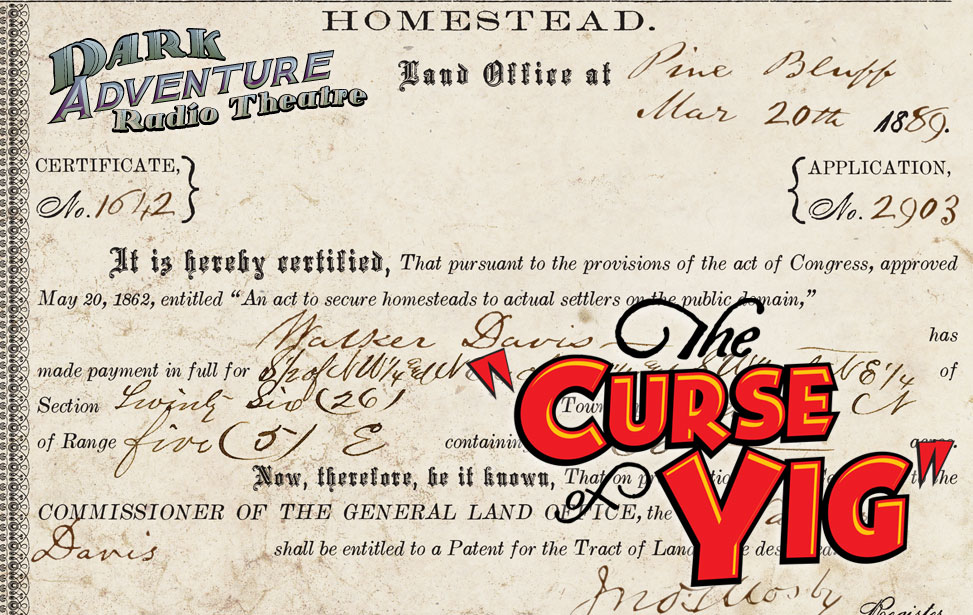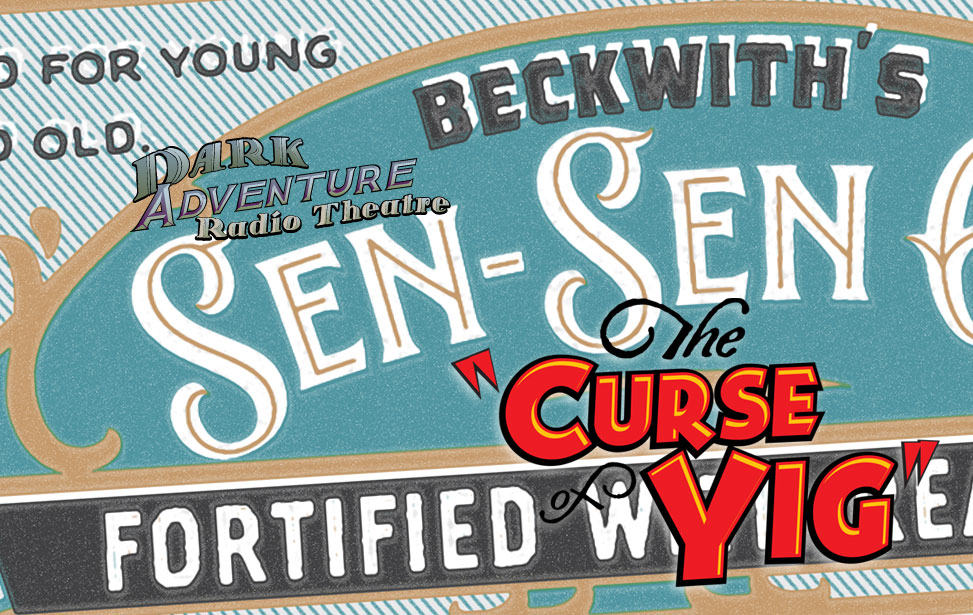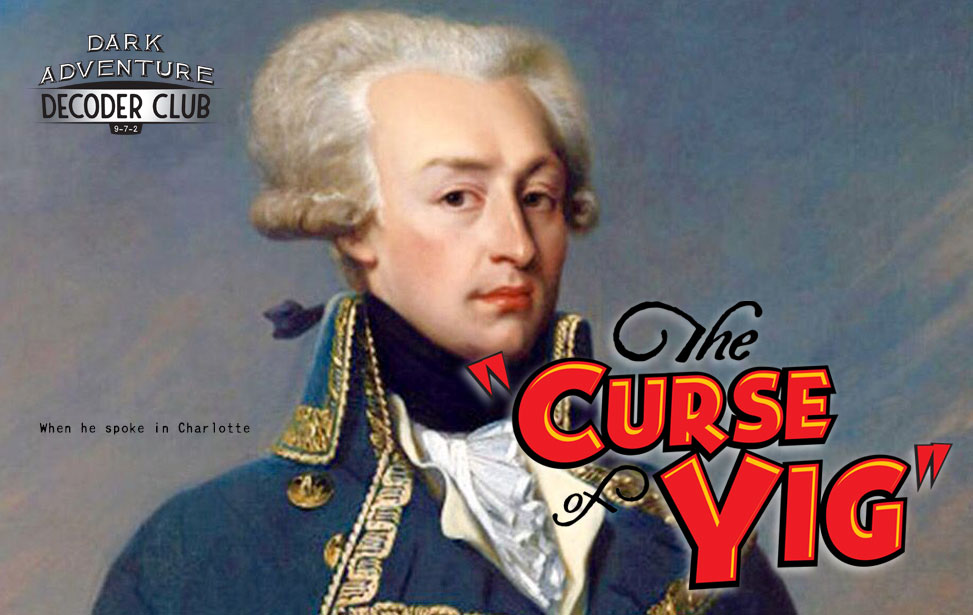The Curse of Yig
A student of Native American lore investigates shadowy tales of the snake god of an extinct tribe of the Great Plains. His inquiry uncovers an account from 1889 of settlers homesteading in the Indian Territories of Oklahoma. A pervasive fear of snakes nudges a simple settler towards madness. Are his fears of the dreaded snake god just the result of hearing old stories, or is a new story unfolding as Yig's curse takes hold?
“The Curse of Yig” is rather an outlier among the tales of HPL. Going far from the comfortable backdrop of New England, Lovecraft made use of a setting in rural Oklahoma and created a new deity for his pantheon of Great Old Ones — the serpent god Yig. The story came about as a collaboration — of a sort — between Lovecraft and one of his revision clients, Zealia Bishop. Zealia sent HPL the germ of a story learned from her grandmother Compton, who lived in the Oklahoma territory in the late 1800s, and HPL developed it into something much richer and more satisfying.
Get it now!Props
To enhance your listening pleasure, the HPLHS has packed the binder sleeve for The Curse of Yig with carefully created props from the story. You'll get:
Track Listing
1. Opening 2:48
2. The Artifact 9:35
3. The Settlers 25:53
4. The Party 25:36
5. The Curse 12:12
6. Closing 1:15
Total Runtime 77:19
Cast and Crew
Amir Abdullah...Joe Compton
Leslie Baldwin...Maggie O'Toole, Sarah Mae
Sean Branney...Big Jim Barrow
Kacey Camp...Dawn Crow, Jenny Rigby, Jimmy Jack
Ken Clement...Lester Mayhew
Mike Dalager...Grey Eagle
Elu Grace...Sally Compton
McKerrin Kelly...Patricia Barrow, Emma Jean
Andrew Leman...Dr. McNeil
Luci Lyle...Newt Stillman, Declan O'Toole
Barry Lynch...Tom Rigby
Johnny McKenna...Seamus O'Toole
Grinnell Morris...Roger Kimball
David Pavao...Mr. Palmer, Max Stillman
Kevin Stidham...Walker Davis
Josh Thoemke...Announcer
Sarah van der Pol...Audrey Davis
Time Winters...Lafayette Smith
Based on the story by Zealia Bishop and H.P. Lovecraft
Written by Sean Branney & Andrew Leman
Music by Troy Sterling Nies and Reber Clark
Party Fiddle by Nancy Kuo, playing "Drowsy Maggie" and "Drunken Billy Goat"
Cover and Disc illustrations by Darrell Tutchton
Prop Inserts by Andrew Leman & Sean Branney
Research Assistance by David G. Cercone II
Native American Expertise by Theresa Williams
Ledger Art by Josh Atcheynum
Produced by Sean Branney and Andrew Leman
Script, Liner Notes & More

The decapitated Hessian soldier who appears as the Headless Horseman in Washington Irving's "Legend of Sleepy Hollow" might be the most famous one, but there are numerous headless horsemen figures in folklore since the middle ages. English folklore features the headless Green Knight, who challenges Sir Gawain in Arthurian legend. Irish mythology includes the Dullahan, a demonic fairy who rides a black horse and carries his grinning head under his arm. In Scots legend, both the horseman and the horse are headless. The version of the story that Big Jim Barrow tells in this episode is a very abridged version of the 1865 novel The Headless Horseman by Captain Mayne Reid. Reid was a fascinating figure in his own right, and his novel is based in part on his own adventures in the American west and on Texas folklore.
 In modern America, at least, the Halloween treat of choice is some form of candy. But the kinds of candy we've grown used to were not available in Oklahoma in 1889, and they might well have handed out soul cakes instead, a traditional seasonal treat with more religious implications. You can learn all about soul cakes and other All Hallow's Eve traditions of yesteryear!
In modern America, at least, the Halloween treat of choice is some form of candy. But the kinds of candy we've grown used to were not available in Oklahoma in 1889, and they might well have handed out soul cakes instead, a traditional seasonal treat with more religious implications. You can learn all about soul cakes and other All Hallow's Eve traditions of yesteryear!
 While the Kitsawi are an entirely fictional band, Ledger Art was a very real practice of the Plains tribes of the 19th century. Our Native American consultant, Theresa Williams, introduced us to Josh Atcheynum, who is a modern-day Plains Cree practitioner of this art form living in the north woods of Wisconsin. Josh works with actual antique ledger paper and a variety of inks and pencils. He provided the artwork for the prop ledger art included with this episode. You can find more of his work on his Instagram page.
While the Kitsawi are an entirely fictional band, Ledger Art was a very real practice of the Plains tribes of the 19th century. Our Native American consultant, Theresa Williams, introduced us to Josh Atcheynum, who is a modern-day Plains Cree practitioner of this art form living in the north woods of Wisconsin. Josh works with actual antique ledger paper and a variety of inks and pencils. He provided the artwork for the prop ledger art included with this episode. You can find more of his work on his Instagram page.
 We've reimagined Joe Compton as a veteran of the U.S. 9th Cavalry, an African American regiment formed in 1866 along with the 10th Cavalry as the first peacetime all-Black U.S. Army units. Their nickname was bestowed on them by the Native Americans they were tasked with fighting. The last surviving Buffalo Soldier, Mark Matthews, died in 2005 at the age of 111. We recognize their service with humble gratitude. The prop newspaper from this episode includes a real story of the Buffalo Soldiers written by Frederic Remington in 1889 and first published in The Century Magazine.
We've reimagined Joe Compton as a veteran of the U.S. 9th Cavalry, an African American regiment formed in 1866 along with the 10th Cavalry as the first peacetime all-Black U.S. Army units. Their nickname was bestowed on them by the Native Americans they were tasked with fighting. The last surviving Buffalo Soldier, Mark Matthews, died in 2005 at the age of 111. We recognize their service with humble gratitude. The prop newspaper from this episode includes a real story of the Buffalo Soldiers written by Frederic Remington in 1889 and first published in The Century Magazine.
 The history of African Americans in Oklahoma is complicated and largely unhappy, although there was a brief time when it was promoted as a kind of promised land for former slaves after the Civil War. Pre-order customers of this episode received a bonus prop which was a replica combining a number of different real recruitment posters for African Americans to settle in the Indian Territory. There really was an Oklahoma Immigration Association based in Topeka, led by people like Edward P. McCabe and William Eagleson. Our sincere thanks go out to our intrepid research assistant David G. Cercone, who reached out despite the fact that libraries and museums are closed by COVID, and managed to get a lot of fascinating information for us. (It turns out the people at the Oklahoma Historical Society are big fans of H.P. Lovecraft!) Our thanks also to the librarians and archivists who answered David's calls, including Veronica Redding of the OKHS, Malea Walker of the Library of Congress, and Karen Kirsheman of the Free Library of Philadelphia.
The history of African Americans in Oklahoma is complicated and largely unhappy, although there was a brief time when it was promoted as a kind of promised land for former slaves after the Civil War. Pre-order customers of this episode received a bonus prop which was a replica combining a number of different real recruitment posters for African Americans to settle in the Indian Territory. There really was an Oklahoma Immigration Association based in Topeka, led by people like Edward P. McCabe and William Eagleson. Our sincere thanks go out to our intrepid research assistant David G. Cercone, who reached out despite the fact that libraries and museums are closed by COVID, and managed to get a lot of fascinating information for us. (It turns out the people at the Oklahoma Historical Society are big fans of H.P. Lovecraft!) Our thanks also to the librarians and archivists who answered David's calls, including Veronica Redding of the OKHS, Malea Walker of the Library of Congress, and Karen Kirsheman of the Free Library of Philadelphia.
For your enjoyment, we present free PDF downloads of the final recording script and liner notes of "The Curse of Yig". Note: this script is only for use for reading along with Dark Adventure Radio Theatre; no performance of the script may be made without written consent of the HPLHS.

















